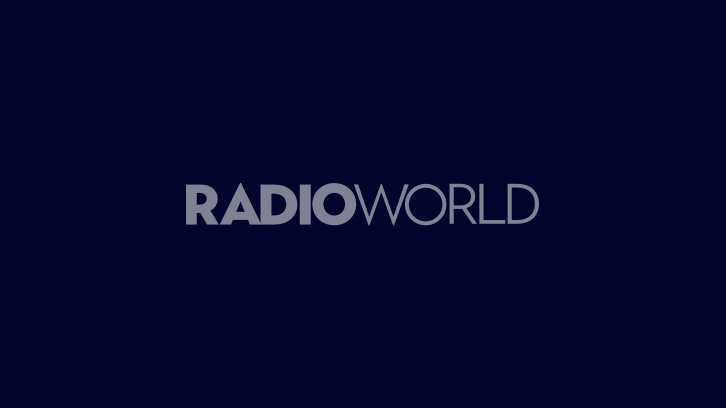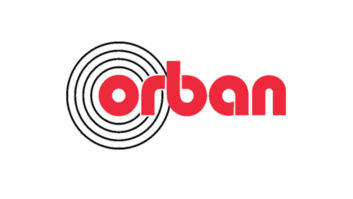The world of broadcast audio processing has changed immensely over the decades, yet it remains characterized by a handful of familiar brand names, companies whose products have great impact on how your station sounds, whether the audio reaches listeners over the air or via streamed signal.

Now one of the most recognizable brands is under new ownership. Orban has been acquired by DaySequerra and its majority owner David Day.
The new company, Orban Labs Inc., will be headquartered at DaySequerra’s offices in New Jersey; it will design, market and sell ATI-, DaySequerra- and Orban- branded products worldwide. The acquisition includes U.S. and European operations of Orban; the combined company will have 34 employees in the United States and seven in Europe.
The seller is CRL Inc., which owned Orban since acquiring it from Harman 16 years ago. Terms were not announced. The acquisition was subject to approval by shareholders of CRL Inc.; that was considered a formality and was pending as I write.
PRODUCT CARDS
Both companies make audio products for radio, TV and internet broadcasters.
DaySequerra gear is used, among other things, for digital radio processing and monitoring, loudness measurement/control and sending multichannel surround audio over stereo. Its lineup includes tuners with TimeLock that help HD Radio broadcasters manage diversity delay; another of its successful products is the Market Area Monitor, of which 3,500 have shipped. Tech partners include ALC Networx, Apple, Audinate, DTS, Fraunhofer and Ross Video. It also owns Audio Technologies Inc., originally acquired in 2003; ATI makes infrastructure components like distribution amps, amplifiers and mixers.
Orban is best known for its Optimod processors and codecs used in FM, AM, DAB, streaming and production/mastering — and of course for Bob Orban himself. He will stay with the business he launched in 1967 when he sold a stereo synthesizer to WOR(FM) in New York and which took off in 1975 when he and John Delantoni established Orban Associates and introduced the Optimod 8000 processor for FM. He will continue to be based in California, directing Orban Labs’ engineering.
Jay Brentlinger, president/CEO/chairman of seller CRL Inc., becomes DaySequerra vice president of sales for the Americas. “He’s already working on several really important deals for us,” Day said. Also prominent is DaySequerra Vice President of Business Development Mike Pappas, a veteran radio engineer and consultant who is now a minority investor in the parent company.
The acquisition came about when Day got to know Brentlinger through the Broadcast Industry Group, a marketing alliance they helped launch in 2014. DaySequerra employees also were working with Bob Orban on integrating their TimeLock system with his HD Radio processors.
Day said the transaction wasn’t particularly complicated. “Jay has bought and sold stations; I was in mergers and acquisitions for 12 years, so we both knew how to do this and what it would take.”
“ORBAN INSIDE”
The combination of DaySequerra and Orban engineering brings symbiotic benefits, he said; merging them was “an essential element in this deal. … opportunities like this don’t happen very often. Our combined technology will facilitate tighter integration in the broadcast radio and TV air chains to help our customers improve their quality of service, so you’ll soon see TimeLock as part of our ’Orban Inside’ strategy.”
Might David Day butt heads over engineering issues with Bob Orban, a past recipient of the NAB Radio Engineering Achievement Award? Will DaySequerra’s product development group in New Jersey get along with the Orban engineering team in the Bay Area?
“I’m not showing up to the party late and telling Bob Orban and his team what to do, that’s for sure,” Day told me firmly. “What we’re going to do is put the finest minds together, and we’re going to put them on the biggest projects. We’ve got several big … company-changing projects that we’ve been working on; you look at it and you go, ‘Boy, wouldn’t I just love to have Bob Orban tell me how to solve this problem.’ Now I can ask.
“Bob is very energetic and very excited. He told me, maybe two weeks ago, that he really thinks that some of his best work is in front of him. I think some of the things that we’re working on now are very important and are going to change radio and TV for the better.”
DaySequerra now has closed Orban’s Scottsdale facility, though two employees will stay local for service and to oversee the startup of ATI and Orban contract manufacturing in the Phoenix area. ATI previously had production operations in Nogales, Ariz.
The acquisition also should help DaySequerra expand distribution, particularly internationally.
Though in the radio processing space there’s little overlap between DaySequerra and Orban products, both are familiar names in television.
DaySequerra boxes can be seen in remote TV trucks at the Olympics and supporting 5.1 channel surround sound HDTV broadcasts of “Dancing With the Stars” or the Grammys. Yet in the past, when Day traveled to France, England, Germany or Japan to make sales pitches to the likes of the BBC, NHK and Orange, he had to spend time explaining what DaySequerra is — whereas in Germany, “Orban is legislated to go in their nationalized TV stations. Or you look for distributors and you try to expand. In Abu Dhabi, for example, the [distributor] from Orban isn’t going to take on a competitive audio processor, no matter how good it is. We’re a relative newcomer in the DTV space and Orban’s been there for a long time.”
Similarly, though ATI products sell well in southeast Asia and South America, it’s not easy to get a new distributor’s attention by walking in with a digital distribution amplifier. By comparison, the name Orban helps open doors. And now, “If it’s a country that’s adopted HD Radio, [the distributor] can sell them DaySequerra HD Radio modulation and TimeLock monitors; they can sell them Orban audio processors on the radio and the television side; and they can sell them ATI boxes for all of those uses.”
With that international awareness in mind, DaySequerra at this year’s IBC conference will begin to introduce products under the Orban brand. Eventually, all of its DTV audio processors and most of its other gear will carry the Orban name, though mod monitors will keep the DaySequerra badge.
COMPETITION
Orban is not of the scale it was when the San Francisco Bay-area headquarters alone employed 114 people under Harman; the company and its radio manufacturing environment have both seen great changes since, including a proliferation of processor competition, a U.S. economic recession and a soft commercial radio revenue market that affects station capital outlays.
Debt too was part of the Orban story. In 2000, Circuit Research Labs Inc. acquired it for $10.5 million from Harman Pro North America, according to Radio World reporting at the time; but CRL was burdened by the obligations and eventually worked with Harman to restructure the debt. The two finally closed on the purchase agreement in 2007, when CRL made a last $1.5 million cash payment.
In recent years, Orban has relied a good deal on Euro-based manufacturing, customer service and support. In 2002 it had acquired assets of German firm Dialog4 System Engineering. After that, Ludwigsburg, Germany, became its European headquarters. In 2006, Orban brought many of its California functions to Arizona; more recently it consolidated engineering functions further to Scottsdale and Ludwigsburg. By 2015, approximately 80 percent of Orban production was done in Germany, according to a Radio World story.
I posited to Day that the Orban brand doesn’t have the reach it enjoyed two decades ago. He agreed only to an extent.
“It’s certainly true of the big box processors. Omnia is formidable competition; Wheatstone is an important competitor. [But] when I go to XM/Sirius, or when I get to visit other streaming companies outside the U.S., all I see is racks and racks and racks of Orban streaming cards.
“If you’re talking about terrestrial radio, absolutely there’s much more competition now than there was 25 or 30 years ago,” he continued. “In fact, at the last NAB, there was one guy working out of a dry basement in the Netherlands who put together the PC software for a pretty nice radio processor. The minute you’ve got software as competition, you’re going to have more competitors able to get started, at least, in the business.”
But he sees the industry evolving dramatically, with savvy manufacturers changing their business models to suit.
“If you just look at what Nautel’s thinking about, or you look at what Lawo proposed with virtual radio, there’s all kinds of new opportunities that we’re focused on. Not that we’re, certainly, walking away from traditional radio, because we’re not; but traditional radio is expanding in ways that even it didn’t realize it was going to do 15 years ago. … We’re going to show the industry that we’re going to do things just a little bit differently.”
The purchase is an investment in radio itself; and Day rejects much of the “common wisdom” he hears about the medium. He points to the acquisition of HD Radio by DTS Inc.
“Some people looked at that and they said, ‘How come that makes sense?’ It makes sense the very minute you start thinking [that] you want to bring an internet experience and put it in the car. Starting with moving maps, real-time weather and traffic, that’s what radio can do. And along with DTS, GatesAir, Lawo and Nautel, we think that’s just another beginning for radio.
“Radio now may not be following a linear path like it has for the last 40 years. People think that it’s going to be outmoded or somehow it’s going to be irrationalized and marginalized because of that; I really think just the opposite.”
The radio industry is going through a disruptive cycle, he said; but thanks to the reliability of over-the-air signals, it remains a viable investment. And that, he said, makes Orban a very good investment too.
“There’s some really good radio still out there in front of us,” he told me. “That’s our vision.”



